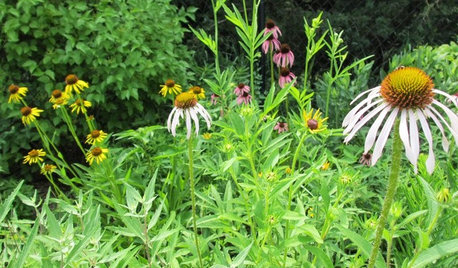Echinacea weirdness
ahughes798
20 years ago
Related Stories

FLOWERSGet Coneflower Blooms All Summer Long
Plant these 5 native species to bring beauty to the garden — and pollen to the insects — from June through August
Full Story
GARDENING GUIDESLessons in the Rewards of Selfless Gardening
Let go of gardening for your own vision and watch the garden’s own true vision come forth
Full Story
GARDENING FOR BIRDSWild Birds Transform a Woman’s Garden and Life
How Sharon Sorenson created a wildlife haven and became the Bird Lady of Southern Indiana
Full StorySponsored






lycopus
ericwi
Related Professionals
Buford Landscape Contractors · Stamford Landscape Contractors · East Chicago Landscape Contractors · Fort Wayne Landscape Contractors · Hampton Bays Landscape Contractors · New Cassel Landscape Contractors · Oak Harbor Landscape Contractors · Porterville Landscape Contractors · Roswell Landscape Contractors · Spring Landscape Contractors · Wallingford Landscape Contractors · Wickliffe Landscape Contractors · Raytown Landscape Contractors · Centreville Decks, Patios & Outdoor Enclosures · Lewisville Decks, Patios & Outdoor Enclosuresmina
Grndskpr_Wenthe
ahughes798Original Author